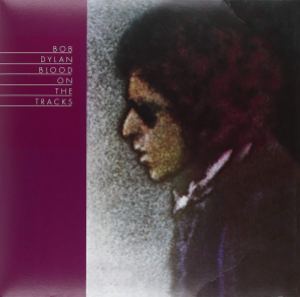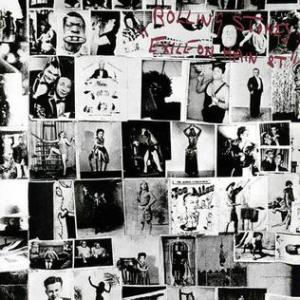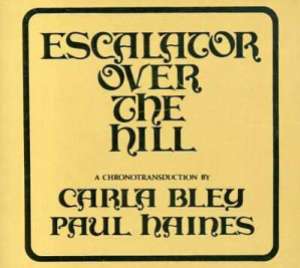 When I began compiling my list of top 25 albums a year ago, I already knew who it would end with: Bob Dylan, the master, one of the 20th century’s leading songwriters, Nobel Prize-winning poet, still going strong after turning 80 this past Monday.
When I began compiling my list of top 25 albums a year ago, I already knew who it would end with: Bob Dylan, the master, one of the 20th century’s leading songwriters, Nobel Prize-winning poet, still going strong after turning 80 this past Monday.
But what album would I choose? Something from his early acoustic folkie years? Well, no. I prefer Dylan the rocker. His middle period, just after he’d gone electric but before the motorcycle crash that would end the white-hot-genius phase of his career? His mid-’1970s comeback? What about his entirely unexpected return to relevance, when he released three albums from the late 1990s through the mid-2000s that were just a half-notch below his greatest work?
My choice came down to two albums: “Highway 61 Revisited” (1965), the greatest rock-and-roll record ever made, and “Blood on the Tracks” (1975), his most personal album, a suite of songs about heartbreak and loss that is brilliant in its conception and execution. His singing, always wildly expressive, is at its best on both. So — how to choose?
For me, it has to be “Blood on the Tracks.” You might call this album my gateway drug into the larger world of Dylan’s music. It was released just as I was ready to listen. It’s accessible in a way that few of his albums are, devoid of the obscurantism that characterizes even some of his best work, including “Highway 61.” (That said, I’ve listened to “Lily, Rosemary and the Jack of Hearts,” one of the anchors on “Blood,” maybe a few hundred times over the years and I still can’t tell you exactly what’s going on, even though it seems fairly straightforward on the surface. I think it’s because it’s all foreground with virtually no background.)
My favorite song on the album, and a contender for my favorite Dylan song ever, is “Idiot Wind,” nearly eight minutes of vitriol dedicated, I guess you’d say, to his then-wife, Sara, from whom he was in the process of divorcing. The story he tells ain’t pretty, and I’m sure Mrs. Zimmerman didn’t deserve it. But it is great art. Dylan knows exactly how it’s going to land, so he eases into it with a hilarious shaggy-dog story and ends with a few unconvincing lines in which he attempts to cast himself as co-malefactor. But the middle — oh, my God. If I’m listening in my car, here’s the part makes me nearly drive off the road:
I noticed at the ceremony, your corrupt ways had finally made you blind
I can’t remember your face anymore, your mouth has changed, your eyes don’t look into mine
The priest wore black on the seventh day and sat stone-faced while the building burned
I waited for you on the running boards, near the cypress trees, while the
springtime turned
Slowly into Autumn
The way Dylan stretches out and twists “slowly” kills me every time I hear it.
Every song on “Blood on the Tracks” is a revelation. It kicks off with “Tangled Up in Blue,” a strange song that mashes several different narratives together, centuries apart, and that serves as a commentary, I suppose, on the ’60s and what he was leaving behind. It would become one of his signature songs, along with “Blowing in the Wind” and “Like a Rolling Stone.” “You’re a Big Girl Now” and “If You See Her, Say Hello” depict Dylan at his most vulnerable. (Dylan has said “Blood on the Tracks” is not about him. But Dylan himself is a character played by Robert Zimmerman.)
Even the seeming trifles, which close what used to be sides one and two (they made these things out of vinyl, and you’d play them with a needle, and — well, never mind), serve their purpose. “You’re Going to Make Me Lonesome When You Go” anticipates his lover’s eventual departure even in the midst of their relationship. “Buckets of Rain,” which follows “Shelter from the Storm,” itself a kinder meditation on love, gives us a chance to just relax and come down a bit as we begin to process what we’ve just heard.
And then there’s a song that didn’t even make it onto the album — “Up to Me,” which popped up on the “Biograph” compilation in 1985. It sounds a lot like “Shelter from the Storm,” and it would have been a career highlight for almost any other artist.
If you love “Blood on the Tracks,” I’d recommend a book about its making called “A Simple Twist of Fate,” by Andy Gill and Kevin Odegard. It tells the story of Dylan’s early attempts to record the songs with studio musicians in New York and his decision to re-record most of it in Minneapolis with local musicians and the help of his brother, David Zimmerman. It was not a great band, despite what Gill and Odegard argue, but they bring a sense of urgency to the proceedings that was missing from the New York sessions.
If you’ve never quite gotten around to Dylan, I recommend you start with “Blood on the Tracks.” It might turn out to be where you end up, too.
Please consider becoming a paid member of Media Nation for just $5 a month. You’ll receive a weekly newsletter with exclusive content. Click here for details.









